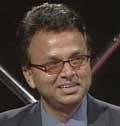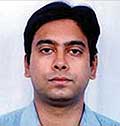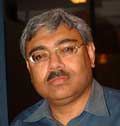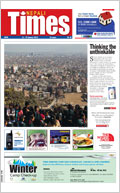 The entry of four new television channels into the market this year has lead to a growth in demand from advertisers of consumer goods for accurate ratings data.
The entry of four new television channels into the market this year has lead to a growth in demand from advertisers of consumer goods for accurate ratings data. But ratings evaluators are off to a rough start. A controversial media survey by an international polling organisation earlier this year has sparked off a debate about the credibility of such studies. AC Nielsen ORG Marg's survey of 'media habits' in April stirred a hornet's nest.
Among those whose programs didn't do well in the Nielsen poll were state-run Nepal Television (NTV) and its Saturday afternoon Bollywood film as well as the talk show Dishanirdesh hosted by Vijay Kumar Pandey. The Nielsen survey showed Dishanirdesh had a viewership of 1.5 percent. "I am not against such surveys but there has to be transparency on how it is done and the methodology adopted," says Pandey. "They must meet ethical standards." Pandey went public with his displeasure by placing ads in Nepali newspapers. Predictably, newspapers and stations that received better ratings and circulation figures were happy with the results and even splashed it across their front pages.
 ORG Marg's Country Representative Palas Bhattacharya says Pandey's program had a low rating because it was not on air when the field work of the survey took place from November 2002 to January 2003 . "If your program is not being shown, naturally people would not name it and that is what happened in the case of Dishanirdesh."
ORG Marg's Country Representative Palas Bhattacharya says Pandey's program had a low rating because it was not on air when the field work of the survey took place from November 2002 to January 2003 . "If your program is not being shown, naturally people would not name it and that is what happened in the case of Dishanirdesh." Independent media analysts say they did find some discrepancies in the Nielsen ORG Marg survey and it contradicted the findings of other media polls done before and after it. Dishanirdesh, for instance, showed a 49 percent rating in the CEDA polls. "It did not tally with the findings which most of the other surveys had shown," said an official with a reputed marketing agency in Kathmandu, who did not want to be named in this article.
An ORG Marg insider admitted to us that some components of the survey may have misrepresented raw data gathered during a certain period (the last two months of 2002 and in January this year) that gave distorted results.
 "Media surveys at times when there are so many players are critical because everyone claims to be number one and advertising agencies need to properly direct their clients to the right media outlet," explains Joydeb Chakravarty, director at Thomson Nepal.
"Media surveys at times when there are so many players are critical because everyone claims to be number one and advertising agencies need to properly direct their clients to the right media outlet," explains Joydeb Chakravarty, director at Thomson Nepal. But accuracy demands bigger sample size and the bigger the survey, the more expensive it is. Sometimes, sponsors of particular surveys influence what goes in or stays out of a poll, especially if it includes a product range manufactured by a sponsor.
With the increase in the number of media outlets in Nepal, the frequency of media-related surveys has gone up and there are high stakes in showing impressive ratings and circulation. So far, they have been conducted by different private organisations with differing approaches, or tied to other consumer surveys. "Most of the time, they have been tagged along other surveys," says Chakravarty.
And that is not accepted as a healthy practice. "How can you talk about media survey when you are actually doing a survey on cigarette smoking?" Bhattacharya asks. In most parts of the world, media surveys are conducted under the norms of international protocols like the Audit Bureau of Circulation, Media Readership Survey, Television Audience Measurement or IMRB International. Nepal has none of these.
The Press Council does bring out ratings for newspapers and publications every year, but its evaluations on circulation and quality have gaps. "You can't really compare the national dailies published in Kathmandu with periodicals published outside and keep them in the same category," says Kulchandra Wagle, former president of Nepal Press Union.
Ever since the monopoly of state-run media ended after 1990, private media have hired pollsters to conducted media surveys. Some say this opens up conflict of interest issues and the possibility of such surveys being manipulated by sponsors. "That is why the source of funding of such surveys must be made open," Vijay Kumar Pandey maintains.
There is a remedy: selling the survey to corporate subscribers. "If there are subscribers to such surveys, the surveyor will not have a problem financing a poll and will also be responsible to a diverse range of clients for the same results," says Thomson's Chakravarty.
Equally important is the methodology involved. TV viewership depends on variables that cannot be ignored and if a study is to be credible they must be taken into account. For instance, the peak viewership during World Cup Football cannot compare with normal audience numbers.
"That was exactly what had happened regarding our survey on Dishanirdesh," admitted AC Nielsen's Mani Raj Dahal. "The program was off-air when we had our survey."
Nielsen has now launched monthly media surveys in urban centres. The results for September have already been delivered to clients, four of which are big business houses and major advertisers. Each client pays Rs 150,000 to subscribe to the entire survey result. The price is less for different segments of the media.
Advertising agencies and marketing agencies who have seen the results of the ORG Marg monthly media polls say the discrepancies seen in one-off polls appear to have been ironed out and the results are now more consistent with other surveys.


